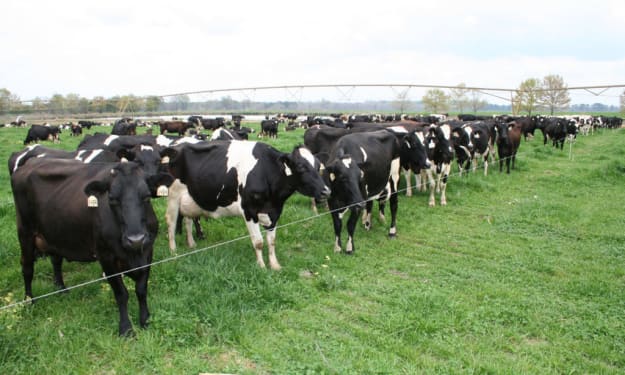Mount Nyiragongo recently erupted, and here's why it's one of Africa's most deadly Volcanos.
The lava from the recent eruption came to a halt just outside Goma, in the Democratic Republic of Congo. However, geologic factors and sporadic monitoring make the volcano a constant hazard.

Mount Nyiragongo is never quiet. A constant lake of lava boiling within the summit crater of the high volcano in the Democratic Republic of the Congo (DRC) is one of the few places on the planet.
Fractures popped up in the volcano's rocky sides, oozing fast-moving lava down its slopes, and things quickly accelerated late on May 22, local time. Some of it made its way to Goma, a six-mile-wide metropolis with a population of 1.5 million people. The night sky glowed crimson as lava, sometimes three stories high, rushed through the streets of many villages surrounding Goma, swallowing any buildings it came across and setting them on fire. There have been 15 confirmed casualties as of this writing, with the number expected to grow in the coming days. On Sunday night, government spokesman Patrick Muyaya reported that two people died in the eruption of Mount Nyiragongo, nine people perished in a road accident while attempting to leave, and four convicts tried to escape their cells. Property damage was reported in 17 settlements around the volcano, including Goma's suburbs, according to him.

The still-smoking molten rock came to a halt just outside of Goma, a gorgeous lakeside city that serves as eastern Congo's economic and transportation hub, preventing a larger calamity, according to local journalists.
Residents of Goma recall the eruption in January 2002, when fast-moving lava and its accompanying carbon dioxide fumes killed hundreds of people and displaced over 100,000. Near the active crater, almost a million people dwell. Videos shot early Sunday of the red-glowing explosion and uploaded on social media revealed a cacophony of people and honking horns.
“We were in contact with individuals in the north of the city who could see the course of the lava as it made its way to the airport from their roofs,” said Patient Iraguha, a Rwandan who works in Goma.
The Congolese government, on the other hand, maintains the area is still on "red alert," and locals have been told to stay wary. And for many Goma citizens who are homeless and hungry, the situation is just growing worse. Hundreds of thousands of people were uprooted by Mount Nyiragongo's sudden eruption, the first in two decades, and another half million have been without potable water since lava rushed into the city's major reservoir, according to aid organisations. While some sleep in churches, schools, or the houses of good Samaritans, others sleep on the streets. Many residents claim that they haven't eaten in 11 days. Aid organizations have warned of the possibility of a cholera breakout.
“We packed what we could eat,” Charmante Kivara Siviwha, 23, said in an interview at the classroom where her and her 4-month-old daughter had been sleeping on a concrete floor. “However, that is insufficient for all of the children.”

Scientists worry that a second Mount Nyiragongo eruption might trigger a "limnic eruption," a rare occurrence in which a massive cloud of toxic gas rises from the depths of adjacent Lake Kivu, enveloping Goma and smothering many of its residents. In recent days, toxic vapors have been emitted from the bowels of Nyamulagira, a nearby minor volcano that last erupted in 2011, raising fears that it, too, could erupt.
Thousands of UN and humanitarian personnel have been evacuated from Goma, many crossing the border into Rwanda, leaving residents displaced by the eruption to fend for themselves. Emergency assistance materials have been requested by aid organizations.
Following the May 22 eruption, close to a million people evacuated Goma. However, some inhabitants have begun to come home in recent days, and a sense of normalcy has returned to some parts of the lakeside city, which sits at the heart of a large region rich in natural wealth but beset by apparently continuous battles. The city's nightclubs are once again pulsing with music, and several of the city's rowdy pubs have reopened. Coltan mining, a precious mineral that is abundant in the surrounding region and is used to produce mobile phones and other gadgets, has restarted.

The violence has also resumed its pace. According to the United Nations, at least 55 people were murdered in strikes on two towns some 200 kilometers north of Goma on Sunday. It was the region's bloodiest day of violence in at least four years. Allied Democratic Forces, an Islamist rebel organization with ties to Islamic State, was blamed by some local officials for the attack. However, officials from the Kivu Security Tracker, which has been tracking violence in eastern Congo since June 2017, claimed the attacks could have been triggered by ethnic tensions.
PRAY FOR THE WORLD! We are all here together from all walks of life, its about time we come together!
By: Ladarius "El Pablo 1x" Trotter
About the Creator
El Pablo 1x
Independent artist, song writer, and producer born in West Memphis, AR, raised in Milwaukee, WI, I'm culturally rounded. Google me @El Pablo1x and find me on all your favorite platform






Comments
There are no comments for this story
Be the first to respond and start the conversation.